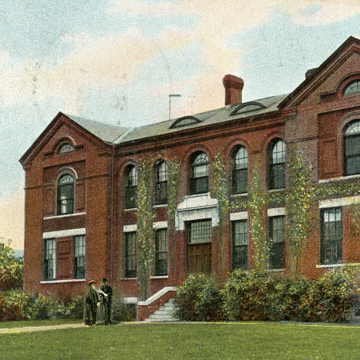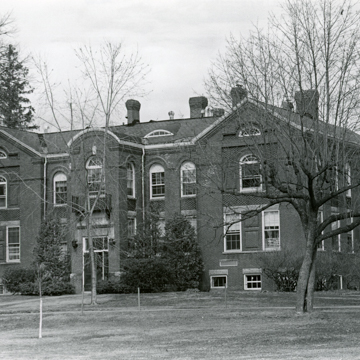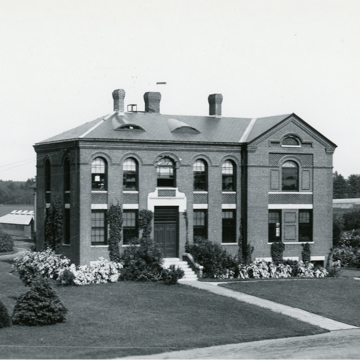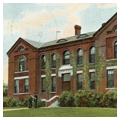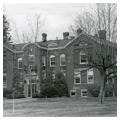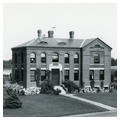Holmes Hall was built as an agricultural experiment station at the Maine State College (later University of Maine at Orono), using federal funds from the Hatch Act of 1887. Architect Frank E. Kidder designed the Romanesque Revival brick building in 1888, and added south and north wings in 1889 and 1904, respectively. Originally housing the Chemistry Department, it has had many occupants over the years although it is now largely vacant.
References
Beard, Frank A., and Robert L. Bradley, “University of Maine at Orono Historic District,” Penobscot County, Maine. National Register of Historic Places Inventory-Nomination Form, 1978. National Park Service, U.S. Department of Interior, Washington, D.C.
Fernal, Merritt Caldwell. History of the Maine State College and the University of Maine. Orono: University of Maine, 1916.
Hansen, Janet, “The Architecture of Maine’s Schools.” In Maine Forms of American Architecture, edited by Deborah Thompson. Camden, ME: Downeast Magazine, 1976.
“Holmes Hall.” University of Maine. Accessed October 13, 2016. http://umaine.edu.
Smith, David C. The First Century: A History of the University of Maine, 1865–1965. Orono: University of Maine Press, 1979.














